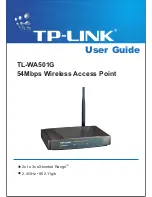
605-0000-701 EasyST Hardware Installation User Guide Rev I
52
Este equipamento satisfaz os requisitos essenciais e outras provisões da Directiva
1999/5/EC.
Suomalainen:
Tämä laite täyttää direktiivin 1999/5/EY oleelliset vaatimukset ja on siinä asetettujen
muidenkin ehtojen mukainen.
Svenska:
Denna utrustning är i överensstämmelse med de väsentliga kraven och andra relevanta
bestämmelser i Direktiv 1999/5/EC.
The Declaration of Conformity related to this product can be obtained from
1.7 CAUTION
Any modifications to this device not expressly authorized by the manufacturer could void the
user's authority to operate this device.
Responsible party for compliance is:
David Mann, Airspan Networks Inc., Cambridge House, Oxford Rd, Uxbridge, Middlesex,
England, UB8 1UN. Telephone (44) 1 895 467450.
1.8 Lightning Protection
WARNING: The following notes are general recommendations for the system. The wireless
equipment should be installed by a qualified professional installer and must follow local and
national codes for electrical grounding and safety. Failure to meet safety requirements
and/or use of non-standard practices and procedures could result in personal injury and
damage to equipment. A direct lightning strike may cause serious damage even if these
guidelines are followed.
All outdoor wireless equipment is susceptible to lightning damage from a direct hit or induced
current from a near strike. Lightning protection and grounding practices in local and national
electrical codes serve to minimize equipment damage, service outages, and serious injury.
Reasons for lightning damage are summarized as:
- Poorly grounded tower/antenna sites that can conduct high lightning strike energy into
equipment.
- Lack of properly installed lightning protection equipment that can cause equipment failures
from lightning induced currents.
A lighting protection system provides a means by which the energy may enter earth without
passing through and damaging parts of a structure. A lightning protection system does not
prevent lightning from striking; it provides a means for controlling it and preventing damage
by providing a low resistance path for the discharge of energy to travel safely to ground.
Improperly grounded connections are also a source of noise that can cause sensitive
equipment to malfunction.
A good tower grounding system disperses most of the surge energy from a tower strike away
from the building and equipment. The remaining energy on the RF cable shield and center
conductor can be directed safely to ground by using a lightning arrestor in series with the RF
cable.
To limit the equipment damage due to a lightning strike, the following practices are
recommended for the wireless system:
- Provide direct grounding from the antenna mounting bracket, the radio and antenna and
the lightning arrestors to the same ground point at the base of the tower or a ground bus on
the building. Use the grounding screws on the antenna bracket and the radio and antenna for
terminating the ground wires.







































